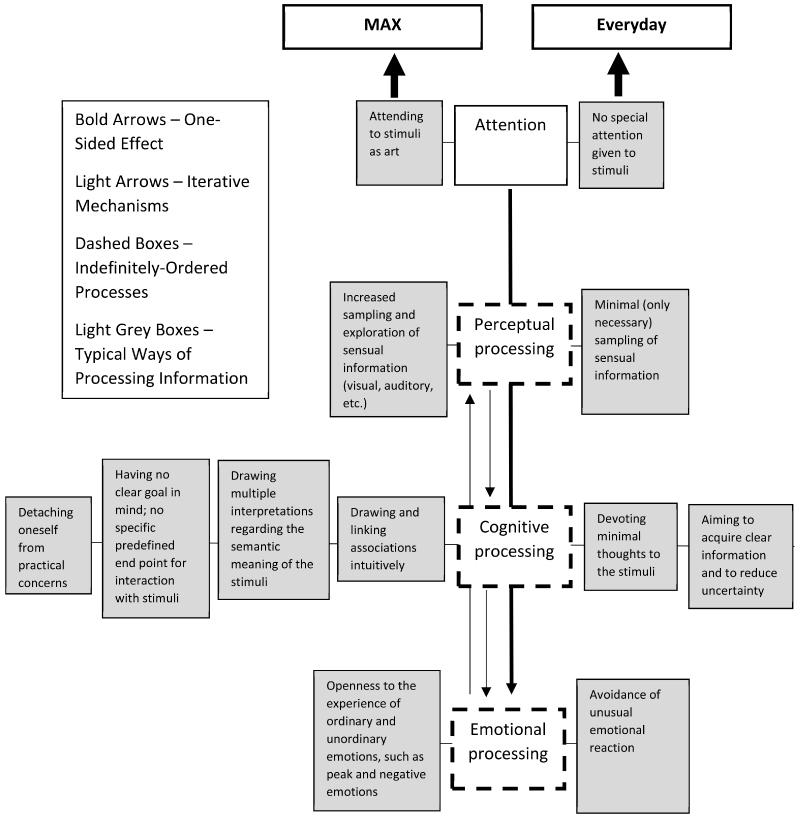References
1AuffarthB.Machine Learning for Time-Series with Python2021Packt PublishingUnited Kingdom
2BeardM. K.Use error: The neglected error componentProc. AUTO-CARTO 91989Baltimore, MD808817808–17
3BonneauG.HegeH.JohnsonC.OliveiraM. M.PotterK.RheingansP.SchultzT.HansenC.ChenM.JohnsonC.KaufmanA.HagenH.Overview and State-of-the-Art of Uncertainty VisualizationScientific Visualization. Mathematics and Visualization2014SpringerLondon
4BotchenR. P.WeiskopfD.ErtlT.Texture-based visualization of uncertainty in flow fieldsProc. IEEE Visualization2005IEEEPiscataway, NJ647654647–5410.1109/VISUAL.2005.1532853
5BoultT. E.WolbergG.Correcting chromatic aberrations using image warpingProc. IEEE Computer Society Conf. on Computer Vision and Pattern Recognition1992IEEEPiscataway, NJ684687684–710.1109/CVPR.1992.223201
6BrodlieK.OsorioR. A.LopesA.A review of uncertainty in data visualizationExpanding the Frontiers of Visual Analytics and Visualization2012SpringerBerlin8110981–109
7BrookeJ.JordanP. W.ThomasB.WeerdmeesterB. A.McClellandA. L.SUS: A quick and dirty usability scaleUsability Evaluation in Industry2014Taylor and FrancisLondon
8BrownleeJ.2018Deep learning models for time series forecastingMachine Learning Mastery
9ButtenfieldB.BeardM. K.Visualizing the quality of spatial informationProc. AUTO-CARTO 101991Vol. 6Baltimore, MD423427423–7
10CakmakE.SchäferH.BuchmüllerJ.FuchsJ.SchreckT.JordanA.KeimD.2020MotionGlyphs: Visual abstraction of spatio-temporal networks in collective animal behaviorComput. Graph. Forum39637563–7510.1111/cgf.13963
11CholletF.
12CorrellM.MoritzD.HeerJ.Value-suppressing uncertainty palettesProc. CHI Conf. on Human Factors in Computing Systems2018ACMMontreal, Canada1111–1110.1145/3173574.3174216
13CorrellM.GleicherM.2014Error bars considered harmful: Exploring alternate encodings for mean and errorIEEE Trans. Vis. Comput. Graphics20214221512142–5110.1109/TVCG.2014.2346298
14DeitrickS.EdsallR.The influence of uncertainty visualization on decision making: An empirical evaluationProgress in Spatial Data Handling2006SpringerBerlin, Heidelberg719738719–38
15FingerR.BisantzA. M.2002Utilizing graphical formats to convey uncertainty in a decision-making taskTheor. Issues Ergon. Sci.31251–2510.1080/14639220110110324
16GeciliE.ZiadyA.SzczesniakR. D.2021Forecasting COVID-19 confirmed cases, deaths and recoveries: Revisiting established time series modeling through novel applications for the USA and ItalyPLoS One1610.1371/journal.pone.0244173
17GörtlerJ.SchulzC.WeiskopfD.DeussenO.2018Bubble treemaps for uncertainty visualizationIEEE Trans. Vis. Comput. Graphics24719728719–2810.1109/TVCG.2017.2743959
18GreisM.AgroudyP.SchuffH.MachullaT.SchmidtA.Decision-making under uncertainty: How the amount of presented uncertainty influences user behaviorProc. Nordic Conf.on Human-Computer Interaction2016ACMNew York, NY, USA141–410.1145/2971485.2971535
19GreenbergS.BuxtonB.Usability evaluation considered harmful (some of the time)Proc. Conf. Human Factors in Computing Systems (CHI)2008ACMFlorence, Italy111120111–2010.1145/1357054.1357074
20GrietheH.SchumannH.The visualization of uncertain data: Methods and problemsProc. SimVis2006Institute for Operations Research and the Management SciencesMagdeburg, Germany143156143–56
21HadleyW.2014Tidy dataJ. Stat. Softw.591231–23
22HardyL. H.RandG.RittlerM. C.1945Tests for detection and analysis of color blindness; An evaluation of the Ishihara testArch Ophthal4268275268–75
23HaningtonB.MartinB.Universal Methods of Design2019Rockport PublishersBeverly, MA
24HullmanJ.QiaoX.CorrellM.KaleA.KayM.2019In pursuit of error: A survey of uncertainty visualization evaluationIEEE Trans. Vis. Comput. Graphics25903913903–1310.1109/TVCG.2018.2864889
25JohnsonM. K.FaridH.Exposing digital forgeries through chromatic aberrationProc. Multimedia and Security2006ACMNew York, NY, USA485548–5510.1145/1161366.1161376
26KayM.2024ggdist: Visualizations of distributions and uncertainty in the grammar of graphicsIEEE Trans. Vis. Comput. Graphics30414424414–24
27KeppelG.Design and Analysis: A Researcher’s Handbook4th ed.2004Upper Saddle River, NJ
28KamalA.DhakalP.JavaidA. Y.DevabhaktuniV. K.KaurD.ZaientzJ.MarinierR.2021Recent advances and challenges in uncertainty visualization: A surveyJ. Vis.241301–3010.1007/s12650-021-00755-1
29KayM.KolaT.HullmanJ. R.MunsonS. A.When (ish) is my bus?: User-centered visualizations of uncertainty in everyday, mobile predictive systemsProc. CHI Conf. on Human Factors in Computing Systems2016ACMNew York, NY509251035092–10310.1145/2858036.2858558
30KohK.KimB.SeoJ.Effect of lateral chromatic aberration for chart reading in information visualization on display devicesAdvanced Visual Interfaces2014ACMNew York, NY289292289–92
31KorporaalM.RuginskiI. T.FabrikantS. I.Effects of uncertainty visualization on map-based decision making under time pressureHuman-Media Interaction2020Vol. 2Frontiers Media SALausanne, Switzerland
32LamH.BertiniE.IsenbergP.PlaisantC.CarpendaleS.2012Empirical Studies in Information Visualization: Seven ScenariosIEEE Trans. Vis. Comput. Graphics18152015361520–3610.1109/TVCG.2011.279
33LeeS.EisemannE.SeidelH.-P.2010Real-time lens blur effects and focus controlACM Trans. Graphics29171–7
34LeoJ.LuhangaE.MichaelK.Machine learning model for imbalanced cholera dataset in TanzaniaSci. World J.1121–1210.1155/2019/9397578
35LucchesiL. R.WikleC. K.2017Visualizing uncertainty in areal data with bivariate choropleth maps, map pixelation and glyph rotationStatistics6292302292–30210.1002/sta4.150
36LundstromC.LjungP.PerssonA.YnnermanA.2007Uncertainty visualization in medical volume rendering using probabilistic animationIEEE Trans. Vis. Comput. Graphics13164816551648–5510.1109/TVCG.2007.70518
37MachS.GründlingJ. P.SchmalfußF.KremsJ. F.How to assess mental workload quick and easy at work: A method comparisonAdvances in Intelligent Systems and Computing2019SpringerUnited States978984978–84
38MirandaG.BaetensJ.BossuytN.BrunoO.BaetsB.Real-time prediction of influenza outbreaks in BelgiumEpidemics201928ElsevierUnited Kingdom
39PangA.WittenbrinkC.LodhaS.1997Approaches to uncertainty visualizationVis. Comput.13370390370–9010.1007/s003710050111
40PanjaM.ChakrabortyT.NadimS.GhoshI.KumarU.LiuN.2023An ensemble neural network approach to forecast Dengue outbreak based on climatic conditionChaos, Solitons & Fractals16710.1016/j.chaos.2023.113124
41RiveiroM.Evaluation of uncertainty visualization techniques for information fusionInt’l. Conf. Information Fusion2007IEEEPiscataway, NJ181–810.1109/ICIF.2007.4408049
42SatrioC.DarmawanW.Unrica NadiaB.HanafiahN.2021Time series analysis and forecasting of coronavirus disease in Indonesia using ARIMA model and PROPHETProcedia Comput. Sci.179524532524–3210.1016/j.procs.2021.01.036
43SauroJ.LewisJ. R.Quantifying the user experience: Practical statistics for user research2nd ed.2016ElsevierAmsterdam, Netherlands
44SauroJ.LewisJ.Quantifying the User Experience: Practical Statistics for User Research2012Morgan KaufmannWaltham, Massachusetts
45SchneiderM.McDowellM.GuttorpP.SteelE. A.FleischhutN.Effective uncertainty visualization for aftershock forecast mapsNatural Hazards and Earth System Sciences2022Vol. 22European Geosciences UnionMunich, Germany149915181499–518
46SongX.XiaoJ.DengJ.KangQ.ZhangY.XuJ.2016Time series analysis of influenza incidence in Chinese provinces from 2004 to 2011Medicine (Baltimore)26e3929
47SrivenkateshM.2019Performance evolution of different machine learning algorithms for prediction of liver diseaseInt. J. Innovative Technology and Exploring Engineering9227830752278–3075
48WeidmanS.
49WittenbrinkC. M.PangA. T.LodhaS. K.1996Glyphs for visualizing uncertainty in vector fieldsIEEE Trans. Vis. Comput. Graphics2266279266–7910.1109/2945.537309
50YooH. S.Color illusions on liquid crystal displays and design guidelines for information visualizationMaster of Science, Virginia Tech

 Find this author on Google Scholar
Find this author on Google Scholar Find this author on PubMed
Find this author on PubMed